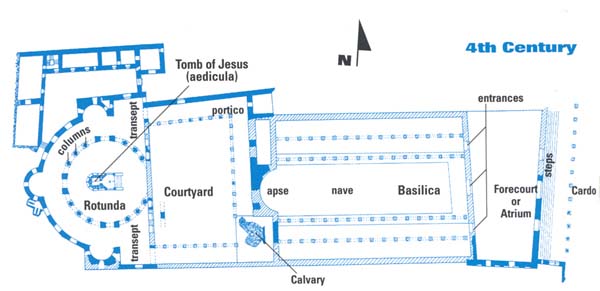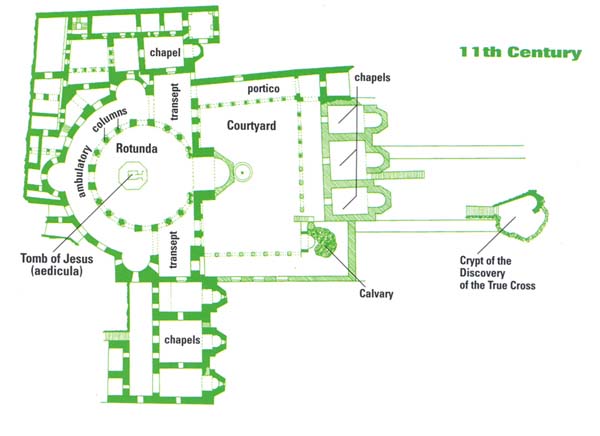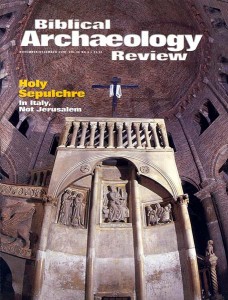The Church of the Holy Sepulchre, Jerusalem
Sidebar to: The Church of the Holy Sepulchre (in Bologna, Italy)

The Jerusalem church has undergone three major stages of construction over the centuries. The original 400-foot-long complex (top plan), begun by Constantine the Great in 326, incorporated the traditional sites of Jesus’ Crucifixion (Calvary, in the southeastern corner of the church courtyard) and Entombment (in the Rotunda) as well as a long basilical church. In the early 11th century, Constantine’s church was destroyed by the Fatimid caliph al-Hakim. Only fragments, including partial columns and an entryway, remain.

By 1048, the Byzantine emperor Constantine IX Monomachos had gained permission from the Muslim authorities to rebuild the Jerusalem church. Monomachos followed Constantine’s basic plan for the Rotunda and courtyard, but he failed to rebuild the basilical church and monumental entryway of the ancient structure. Little of the building from this stage can be seen in Jerusalem today. It is this abbreviated version of Constantine’s plan that inspired the builders of Santo Sepolcro, in Bologna (shown in the plan).
Already a library member? Log in here.
Institution user? Log in with your IP address.

